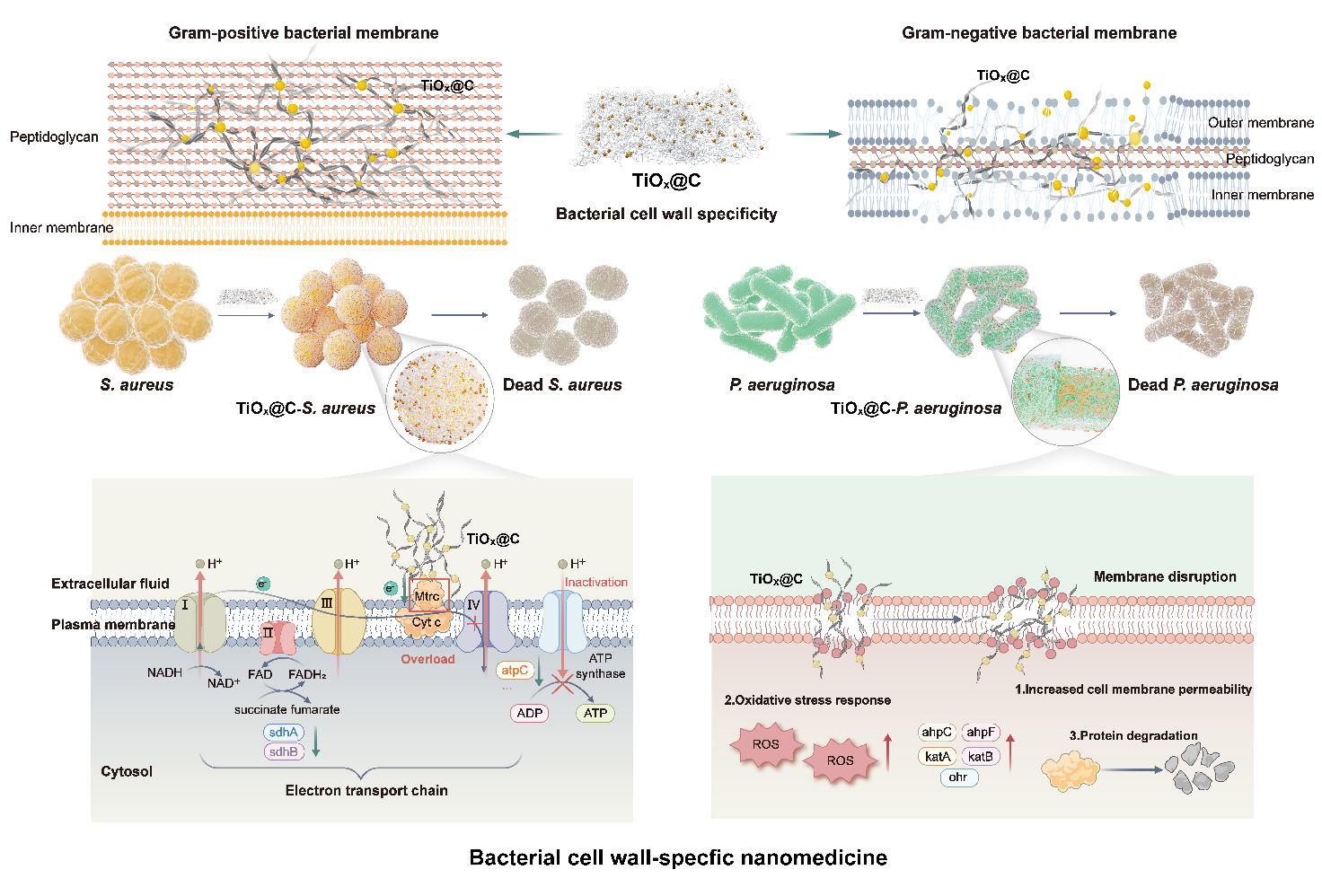Scientists Develop Novel Strategy to selectron-mechanical
antimicrobial platform overcoming drug resistance
In a study published online in Nature Communications on March 22, researchers from the Shanghai Institute of Ceramics, Chinese Academy of Sciences (SICCAS) have developed a wall-structure-responsive nanodrug (TiOx@C) that eradicates drug-resistant pathogens through a novel electron-mechanical interference mechanism. This breakthrough addresses the critical challenge of bacterial resistance in clinical infections. This breakthrough led by CAS Academician Jianlin Shi’s group, which exploited the distinct cell wall architectures between Gram-positive (e.g., Staphylococcus aureus) and Gram-negative bacteria (e.g., Pseudomonas aeruginosa). Key findings include: 1) 90% inhibition rate against both pathogens at 200 μg/mL in vitro; 2) 97% bacterial clearance with accelerated collagen deposition in vivo; 3) Complete wound healing within two weeks in animal models. Mechanistic Innovations:
Structural Recognition: The fiber-like carbon substrate of TiOx@C can penetrate the bacterial membrane of Pseudomonas aeruginosa (P. aeruginosa), but not that of Staphylococcus aureus (S. aureus) due to its thicker bacterial wall, thus achieving bacterial wall specificity.
Resistance Prevention: Dual electron-mechanical action prevents target-specific resistance (no adaptive evolution observed over 21 days).
Biosafety Assurance: The differential nature of the cell membrane serves as a barrier to prevent the carbon substrate from disrupting the integrity of the mammalian cell membrane, thus enabling microbial selectivity.

This study titled “Bacterial cell wall-specific nanomedicine for the elimination of Staphylococcus aureus and Pseudomonas aeruginosa through electron-mechanical intervention”, was published in Nature Communications (16, 2836 (2025)). Prof. Dr. Han Lin as the corresponding author and Yanling You as first author. The authors acknowledge the financial supports from the National Natural Science Foundation of China, National Key R&D Program of China, Natural Science Foundation of Shanghai.



